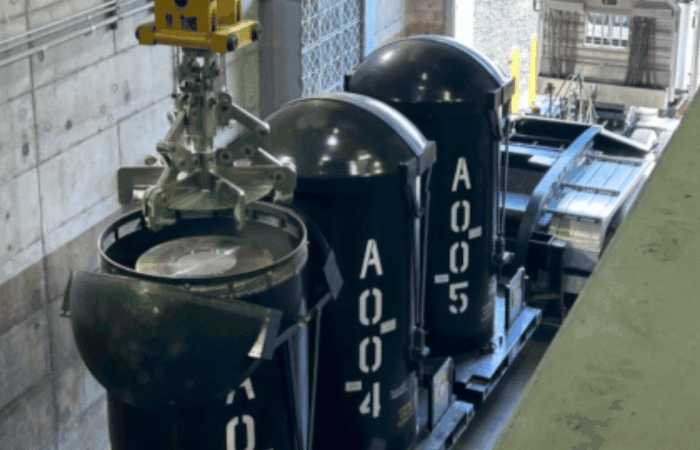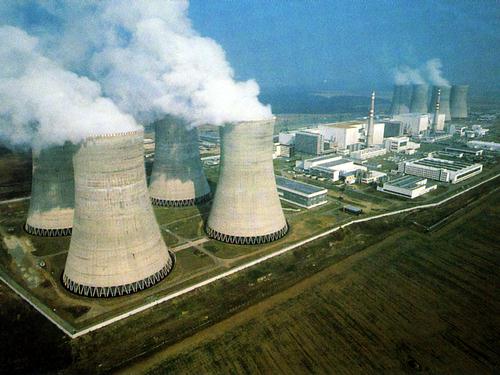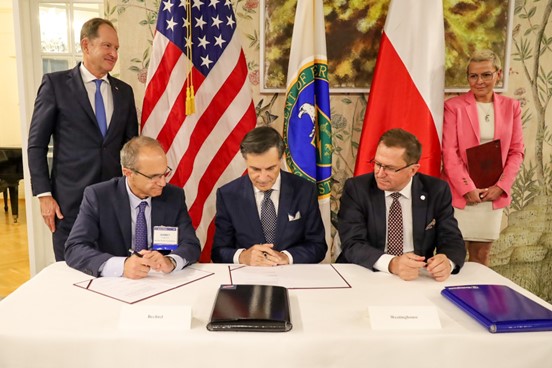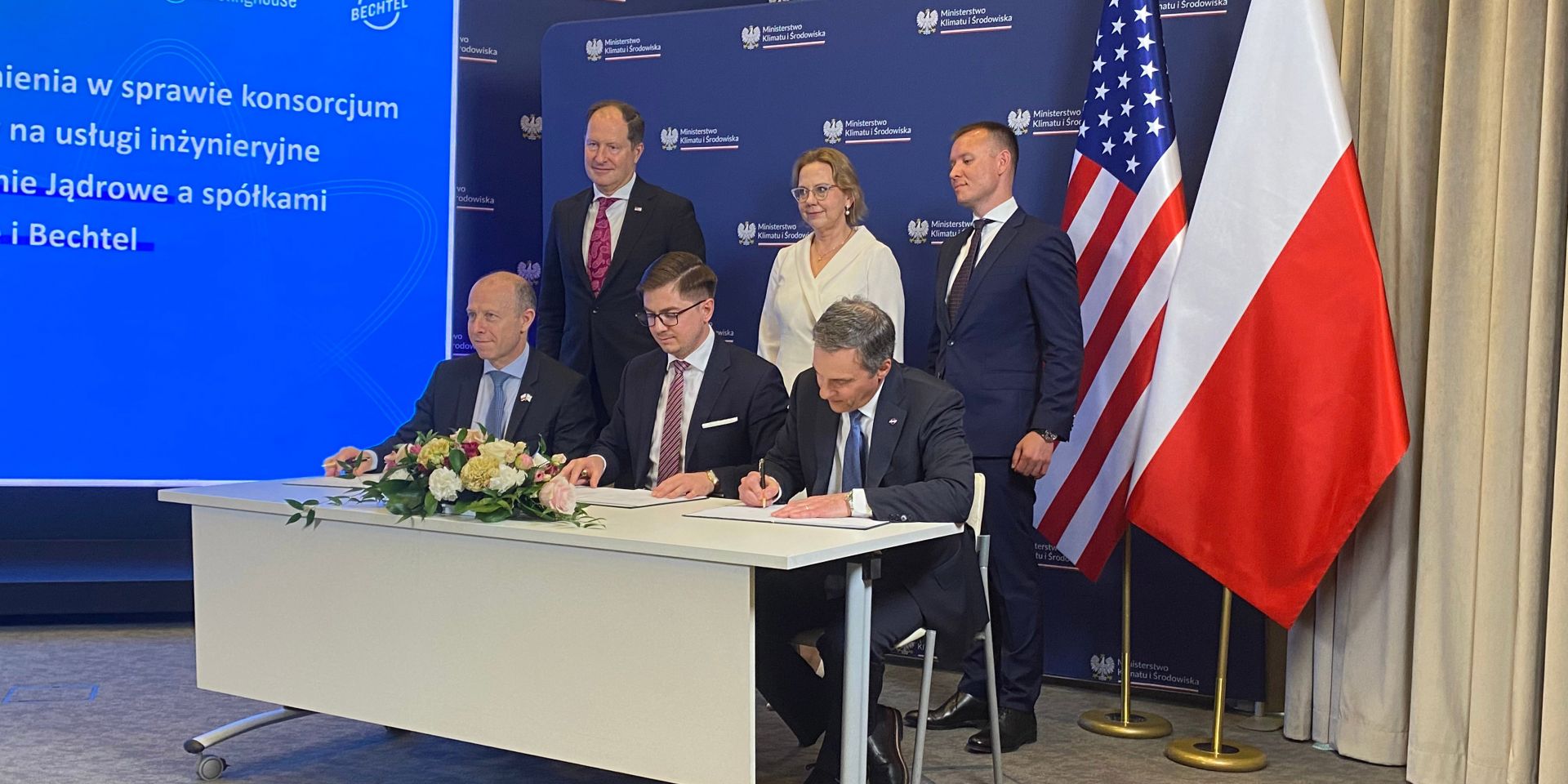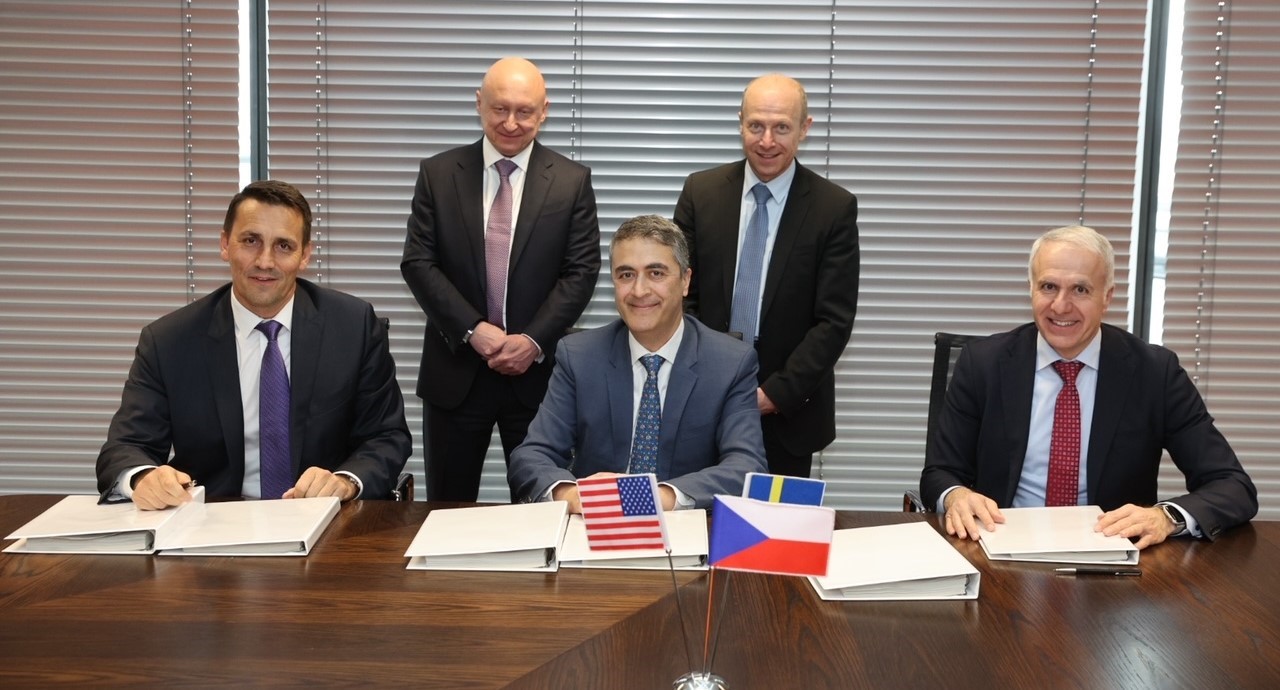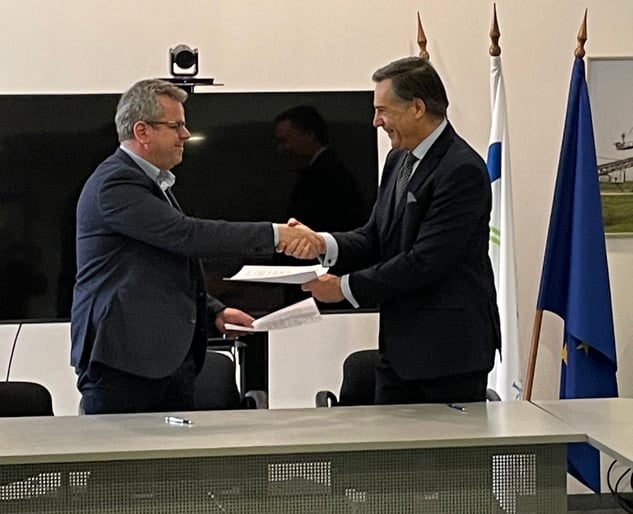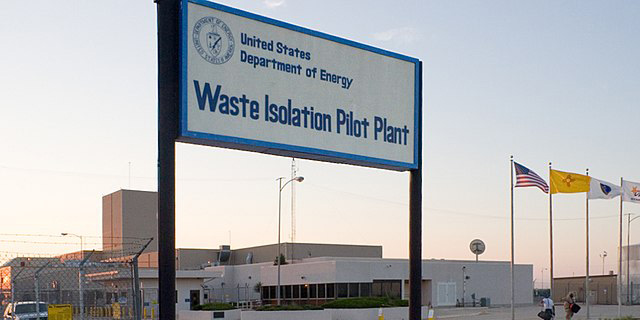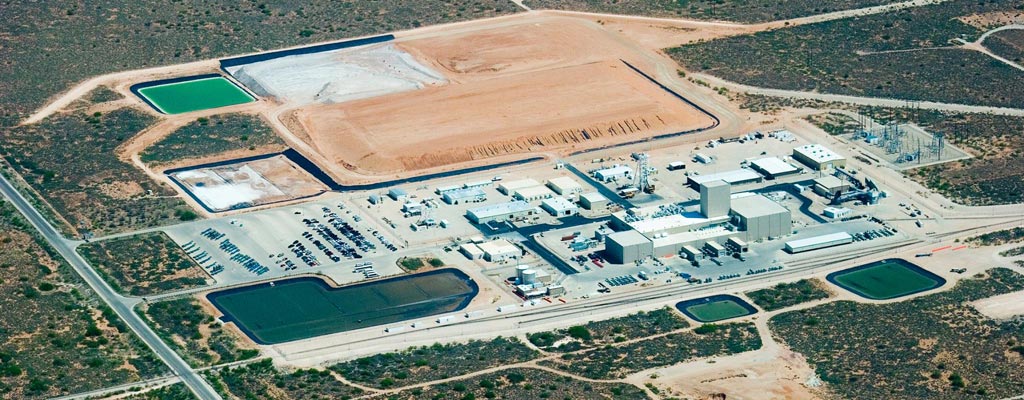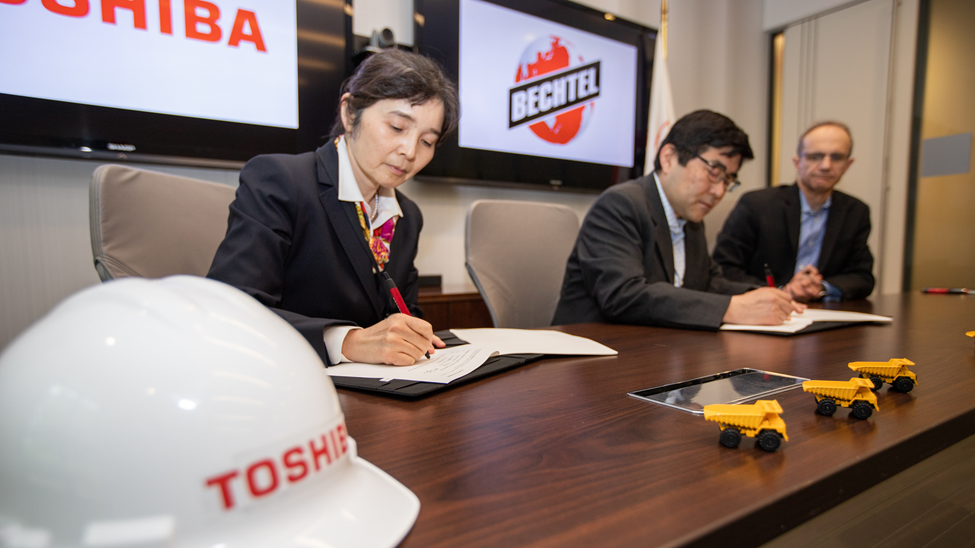Hanford workers recently transferred three containers of nonradioactive test glass from the site’s WTP to the nearby Integrated Disposal Facility. (Photos: DOE)
According to the Department of Energy’s Office of Environmental Management, two contractors at its Hanford Site in Washington state have finished a first-time relay of test glass as the site prepares to vitrify—or immobilize in glass—millions of gallons of radioactive and chemical waste from its large underground tanks.
Video: Watch an “instant replay” of the test glass relay here.
One of 18 startup heaters is installed in Hanford’s second melter, which will be used to vitrify liquid waste. (Photo: DOE)
The Department of Energy’s Office of Environmental Management announced that crews at the Hanford Site’s Waste Treatment and Immobilization Plant, also known as the Vit Plant, recently installed 18 temporary startup heaters in the second of two melters in the plant’s Low-Activity Waste Facility.
The Dukovany nuclear power plant. (Photo: INSP)
Elektrárna Dukovany II (EDU II), a subsidiary of Czech utility ČEZ, has received final bids for the construction of a fifth reactor at the Dukovany plant, as well as nonbinding bids for three additional units to be sited at Dukovany and at Temelín, the Czech Republic’s other nuclear power facility. (Dukovany currently houses four Russian VVER-440/V213 pressurized water reactors, while Temelín is home to two VVER-1000/V320s.)
A ribbon cutting marked the opening of Bechtel’s Engineering Execution Center in Knoxville, Tenn. Pictured, from left, are Glenn Jacobs, Angela McAlpin, Sujal Lagowala, John Howanitz, Craig Albert, Wes Hines, and Mark Field. (Photo: Bechtel)
International engineering, construction, and project-management company Bechtel, which is headquartered in Reston, Va., opened its newest office, the Engineering Execution Center, in Knoxville, Tenn. The office—the second Bechtel has opened stateside in the last few months—will provide engineering support for the company’s numerous mission-based projects, and it is the second new U.S. office opened by Bechtel in the past few months—the other being in Chandler, Arizona.
At the September 27 signing ceremony for the engineering services contract to build Poland’s first nuclear power plant are, from left, John Howanitz, president of Bechtel’s nuclear, security, and environmental global business unit; Westinghouse president and CEO Patrick Fragman; Polish government plenipotentiary for strategic energy infrastructure Anna Łukaszewska-Trzeciakowska; Polish prime minister Mateusz Morawiecki; U.S. ambassador to Poland Mark Brzezinski; assistant secretary of energy for international affairs Andrew Light; and Polskie Elektrownie Jądrowe president Mateusz Berger. (Photo: Bechtel)
Just one week after inking a consortium agreement to partner on the design and construction of Poland’s first nuclear power plant, Westinghouse Electric Company and Bechtel joined state-owned Polish utility Polskie Elektrownie Jądrowe (PEJ) in Warsaw on Wednesday for the signing of the project’s engineering services contract.
At the Bechtel/Westinghouse consortium agreement signing ceremony at the U.S. embassy in Warsaw, were, from left, U.S. ambassador to Poland Mark Brzezinski; Ahmet Tokpinar, general manager of Bechtel’s nuclear power business line; Elias Gedeon, senior vice president for commercial operations at Westinghouse; Mirosław Kowalik, president of Westinghouse Poland; and Anna Łukaszewska-Trzeciakowska, Poland government plenipotentiary for strategic energy infrastructure. (Photo: Bechtel)
Westinghouse Electric Company and engineering, construction, and project management firm Bechtel on September 20 announced the signing of a consortium agreement to partner on the design and construction of Poland’s first nuclear power plant.
Seated, from left, are Patrick Fragman, CEOof Westinghouse; Łukasz Młynarkiewicz, acting president of PEJ; and Craig Albert, president and chief operating officer of Bechtel. Standing, from left, are Mark Brzezinski, U.S. ambassador to Poland; Anna Moskwa, Poland’s minister of climate and environment; and Mateusz Berger, Poland’s government plenipotentiary for strategic energy infrastructure. (Photo: Westinghouse)
Westinghouse Electric Company, Bechtel, and Polish utility Polskie Elektrownie Jądrowe (PEJ)—the three firms leading the effort to build Poland’s first nuclear power plant—have announced the signing of a new agreement that defines the main principles of cooperation on the project’s design and construction and confirms the implementation of its next major stage.
Bohdan Zronek, ČEZ board member and director of the firm’s nuclear energy division; Tarik Choho, president of Westinghouse’s nuclear fuel division; and Aziz Dag, senior vice president of BWR and VVER fuel for Westinghouse (seated, left to right) signed the agreement. Also present were David Benes, ČEZ Group CEO, and Patrick Fragman, Westinghouse CEO. (Photo: Westinghouse)
Westinghouse has signed an agreement with ČEZ, owner and operator of the Czech Republic’s nuclear power plants, to supply VVER-440 fuel assemblies to the Dukovany facility, the American firm announced March 29. Fuel deliveries will commence in 2024, replacing Russia’s TVEL fuel, with an anticipated term of seven years. One of the Czech Republic’s two nuclear power plants, Dukovany houses four Russian-supplied VVER-440/V213 reactors.
The Waste Isolation Pilot Plant in southeastern New Mexico. (Photo: DOE)
Waste management startup Deep Isolation announced that it has entered into a mentor-protégé agreement with Salado Isolation Mining Contractors (SIMCO), the new Bechtel National–led management and operations contractor for the Department of Energy’s Waste Isolation Pilot Plant in New Mexico.
The Waste Isolation Pilot Plant in southeastern New Mexico. (Photo: EPA)
Salado Isolation Mining Contractors (SIMCO), a single-purpose entity comprised of Bechtel National and Los Alamos Technical Associates as a teaming contractor, has assumed responsibility for managing and operating the Waste Isolation Pilot Plant in New Mexico.
The Dukovany nuclear power plant. (Photo: CEZ Group)
A Westinghouse-Bechtel team, France’s EDF, and Korea Hydro & Nuclear Power have all submitted their initial bids for securing the contract to build a fifth reactor at the Czech Republic’s Dukovany plant, Czech utility ČEZ has announced.
The Waste Isolation Pilot Plant in southeastern New Mexico.
Reston, Va.-based Tularosa Basin Range Services (TBRS), a single-purpose entity under the umbrella of Bechtel National, has been awarded the 10-year, $3 billion management and operating contract for the Waste Isolation Pilot Plant (WIPP) by the Department of Energy’s Office of Environmental Management (EM). Located near Carlsbad, N.M., WIPP is the DOE’s geologic repository for defense-generated transuranic waste.
The new contract replaces the current WIPP M&O contract held by Nuclear Waste Partnership, which expires on September 30. The contract with TBRS was announced on July 11.
Bechtel’s Ahmet Tokpinar (right) at the MOU signing ceremony with Toshiba executives Yuki Arima (left) and Kentaro Takagi. (Photo: Bechtel)
Engineering, construction, and project management firm Bechtel Corporation last week announced the signing of a memorandum of understanding with Toshiba America Energy Systems and Toshiba Energy Systems & Solutions to pursue a civil nuclear power plant project in Poland.


